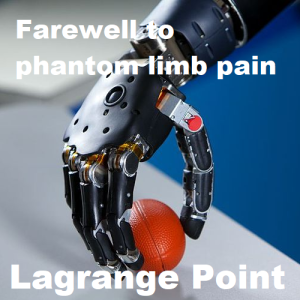
Having a traumatic injury, serious infection or cancer is bad enough let alone if you have to have an amputation. But once that amputation has occurred how do you make life easier for the amputee? Prostheses are helpful, but they can require retraining your brain and lack the sense of touch. Plus phantom limb pain can make life painful and frustrating. This week we find out about surgical and biomedical treatments to help improve prostheses and give amputees better quality of life.
References:
- Bowen, J. B., Ruter, D., Wee, C., West, J., & Valerio, I. L. (2019). Targeted Muscle Reinnervation Technique in Below-Knee Amputation. Plastic and Reconstructive Surgery, 143(1), 309-312. doi:10.1097/prs.0000000000005133
- Cheesborough, J., Smith, L., Kuiken, T., & Dumanian, G. (2015). Targeted Muscle Reinnervation and Advanced Prosthetic Arms. Seminars in Plastic Surgery, 29(01), 062-072. doi:10.1055/s-0035-1544166
- Nathanaël Jarrassé, Etienne de Montalivet, Florian Richer, Caroline Nicol, Amélie Touillet, Noël Martinet, Jean Paysant, Jozina B. de Graaf. Phantom-Mobility-Based Prosthesis Control in Transhumeral Amputees Without Surgical Reinnervation: A Preliminary Study. Frontiers in Bioengineering and Biotechnology, 2018; 6 DOI: 10.3389/fbioe.2018.00164
- Arizona State University. (2018, November 7). New prosthetic hand system allows user to 'feel' again: The Neural-Enabled Prosthetic Hand (NEPH) system marks first time bidirectional prosthesis can be used in home setting. ScienceDaily. Retrieved January 5, 2019 from www.sciencedaily.com/releases/2018/11/181107093757.htm
More Episodes
Episode 376 - Learning from spider webs, venom and combs
 2020-04-27
2020-04-27
 67
67
 2020-04-27
2020-04-27
 67
67
Episode 374 - Lasers, Metal and Insect wings vs Bacteria
 2020-04-13
2020-04-13
 84
84
 2020-04-13
2020-04-13
 84
84
Episode 373 - Deep sea reefs, ocean vents and tiny life
 2020-04-06
2020-04-06
 75
75
 2020-04-06
2020-04-06
 75
75
Episode 372 - Flexible and wearable electronics
 2020-03-30
2020-03-30
 92
92
 2020-03-30
2020-03-30
 92
92
Episode 371 - Marine Mammals vs Parasites
 2020-03-23
2020-03-23
 64
64
 2020-03-23
2020-03-23
 64
64
Episode 370 - Explosions in space and citizen science
 2020-03-16
2020-03-16
 66
66
 2020-03-16
2020-03-16
 66
66
Episode 369 - 2020MMM, Endangered species and City Foxes
 2020-03-09
2020-03-09
 69
69
 2020-03-09
2020-03-09
 69
69
Episode 367 - Sustainable and green Chemistry
 2020-02-24
2020-02-24
 115
115
 2020-02-24
2020-02-24
 115
115
Episode 365 - Wasps, Bees, tasty meals and pesticide.
 2020-02-10
2020-02-10
 79
79
 2020-02-10
2020-02-10
 79
79
Episode 364 - Coronavirus from SARS to MERs and nConv2019
 2020-02-03
2020-02-03
 131
131
 2020-02-03
2020-02-03
 131
131
Episode 363 - Mysteries from underwater volcanoes
 2020-01-27
2020-01-27
 143
143
 2020-01-27
2020-01-27
 143
143
012345678910111213141516171819
Create your
podcast in
minutes
- Full-featured podcast site
- Unlimited storage and bandwidth
- Comprehensive podcast stats
- Distribute to Apple Podcasts, Spotify, and more
- Make money with your podcast
It is Free
- Privacy Policy
- Cookie Policy
- Terms of Use
- Consent Preferences
- Copyright © 2015-2024 Podbean.com






